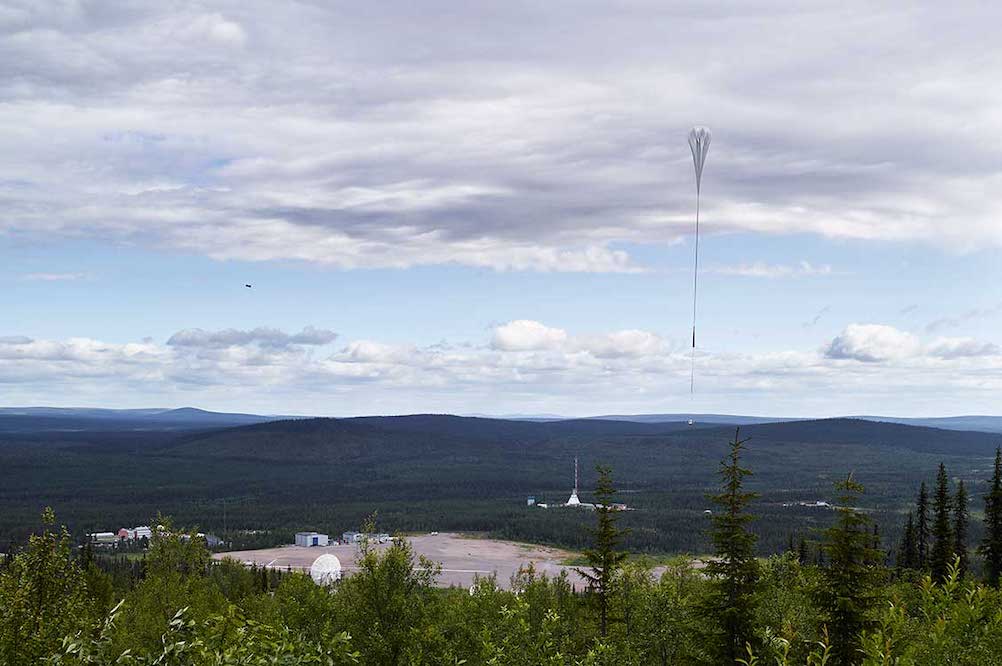Sámi join call to cancel a geoengineering technology test in northern Sweden
A range in Arctic Sweden would be used to test technology related to potential future geoengineering efforts.

With efforts to curb the emissions causing global climate change struggling to overcome inertia and political barriers, some observers are pushing for a set of more dramatic measures, collectively known as geoengineering, that would halt or reverse warming by making massive changes to the planet’s climate system.
One such idea is the dispersion of sun-reflecting aerosols into the atmosphere. In theory, the concept is simple: release a substance into the atmosphere that will send some of the sun’s energy back into space.
Proponents of this approach like to point out that it is inspired by nature itself: Volcanic eruptions eject ash into the atmosphere with the same outcome. Indeed, the 1991 eruption of Mount Pinatubo, in the Philippines, is said to have lowered global temperatures by 0.5 degrees Celsius.
They also cite its relatively low cost: A 2018 report by the UN’s Intergovernmental Panel on Climate Change suggested that solar-radiation modification, as such processes are known, would be an effective way to limit global temperature increases to the 1.5 degrees C target it set in 2015 at a cost of no more than $10 billion annually. By comparison, Morgan Stanley estimated in 2019 that the cost of the alternative, reducing the carbon pollution that causes global warming in the first place, would require $50 trillion worth of investment by 2050.
[With glacial melt accelerating, a geoengineering movement gathers momentum]
But the idea is exceedingly controversial. The IPCC admits there are ethical questions involved with such measures, given their potential unknown consequences and humanity’s track record when we have intervened with nature in the past. There are also legal hindrances to developing them. A 2010 agreement among 193 countries outlawed geoengineering until there was enough evidence that the benefits of tinkering with the planet outweighed any harm it might do. That has made the issue mostly academic.
The agreement does permit lab work and “small-scale scientific research studies” in the field. And, in June, a project named SCoPEx (short for Stratospheric Controlled Perturbation Experiment), being carried out by the Harvard University-affiliated Keutsch Group, is considering whether to do just that. Pending a decision by its advisors, the group will launch a scientific balloon from the Esrange Space Centre, in Kiruna, Sweden, that will put the equipment that would be used in subsequent tests through its paces.
The Keutsch Group insists the launch it is not an experiment in geoengineering, since no sun-reflecting substances will be released. Although, it confirms that if all systems function as designed, a test at a later date would make sense.
But that is a false delineation, argues a group of three Swedish conservancies and the Saami Council, which represents Sámi interests in Norway, Sweden, Finland and Russia. They consider geoengineering a “moral hazard,” given the potentially dramatic consequences it could cause, and they oppose the experiment on the grounds that a test of equipment that could be used in a geoengineering experiment is, in fact, an experiment in geoengineering.
The groups have also taken the Keutsch Group to task for failing to live up to its own guidelines, which say it should take the opinions of Swedish or local leaders into account. This has not happened. Moreover, they point out, there are no Swedish or Sámi representatives on the group’s advisory board.
Had they done so, they would have learned that the experiment runs counter to Sweden’s efforts to reduce carbon pollution, as well as the Sámi understanding of the natural world.
“This project must stop,” Åsa Larsson-Blind, the Saami Council’s Swedish vice-president, told SVT, a broadcaster, last week. “We do not accept the use of Sámi territory to test and legitimize a technology we are against.”
Douglas MacMartin, an engineer at Cornell University, is a proponent of “climate engineering” but accepts that it is not something that everyone is keen on.
“Can we cool the Arctic? The short answer is ‘yes’,” he said during a presentation last week about using geoengineering to prevent permafrost from thawing. “But I phrase that deliberately as ‘can we’ rather than ‘should we’ because that’s actually a much more complicated question.”